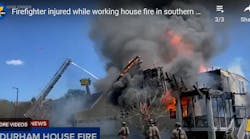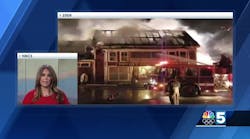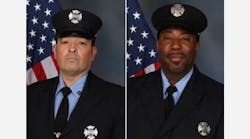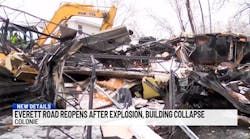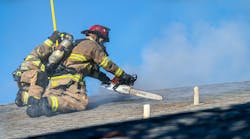Dry weather - combined with debris from trees and brush downed during last year's hurricanes - could make Florida a prime target for severe wildfires this spring, a top forestry official said Thursday.
''What you may see on the 6 o'clock news in April, May and June is (pictures of wildfires in) Florida, instead of Arizona or New Mexico,'' said Agriculture Undersecretary Mark Rey, who directs U.S. forest policy. ''It's been extremely dry since the hurricanes, and it could be a very difficult season.''
Unlike the West, where greater than expected rains could delay the fire season until at least midsummer, the fire risk in Florida is likely to peak this spring, Rey said.
Rey's comments came after a hearing on fire preparedness before a House subcommittee.
Above-average rains in the West and Southwest may mean a delayed, less severe fire season in California, Arizona and New Mexico, Rey said.
Conversely, a lack of rain and snow in the interior Northwest has led to extremely dry conditions that could mean a severe fire season in eastern Washington and Oregon, as well as northern Idaho and western Montana, Rey said. Fires in the Northwest are not expected to begin until late July or August.
Rey told the House Resources forestry subcommittee that the Forest Service again will rely on small planes and heavy helicopters to help fight wildfires across the West, after the Forest Service cut back on its use of big air tankers last year for safety reasons.
''We actually achieved a higher rate of success on initial attack with the reconfigured fleet we used last year than we had in previous years,'' Rey said.
The Forest Service and Interior Department terminated $30 million in contracts with private companies for 33 heavy tankers last year after the National Transportation Safety Board said it could not guarantee their airworthiness. Three such planes crashed between 1994 and 2002, killing seven crew members.
Federal agencies filled in with more single-engine air tankers - crop dusters used to spray fire retardant - and heavy and medium helicopters. The 99.1 percent success rate at stopping fires while they were still small - known as initial attack - exceeded the 98.3 percent success rate in 2003, Rey said.
As many as 20 large tankers could be back on the job if an analysis to be completed by June 1 shows they are safe to fly, Rey said. During the 2004 season, eight former Navy P-3 Orions were returned to service, and three other planes were used in a limited capacity, Rey said.
